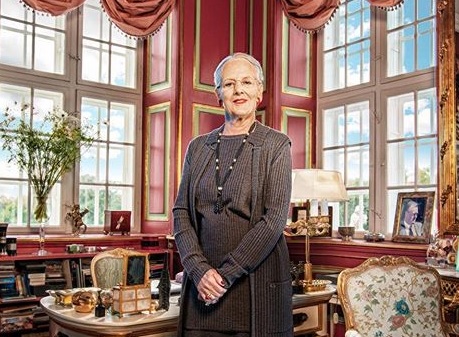
Queen Margrethe of Denmark has been celebrating her Golden Jubilee throughout the year, but it’s only thanks to the updated laws of succession that she was able to inherit from her father.
In 1953, King Frederick IX was comfortably on the Danish throne but the succession was anything but sorted. The king’s children were three young girls: Princess Margarethe, born in 1940, Princess Benedikte, born in 1944, and Princess Anne-Marie, born in 1946.
At the time, the kingdom of Denmark followed agnatic primogeniture, meaning that only males could inherit. And that meant that the Frederick IX’s successor was his younger brother, Prince Knud, and after that, Knud’s two sons.
The process of changing the laws of succession were reportedly started shortly after King Frederick IX inherited the throne in 1947, but the complex laws meant it took six years to hold a referendum and enact the results: two successive Parliaments needed to pass the proposal before a referendum could take place.
On 28 May, Denmark held the 1953 Danish ‘constitutional and electoral age referendum’; its top point was the Act of Succession, which would allow for women to inherit from their fathers in a male-preference primogeniture situation. This meant that Princess Margrethe would become heiress presumptive but could be displaced by the birth of a brother.
The Danish people voted 78.8% in favour of the constitutional changes proposed in the referendum. Prince Knud was displaced to fourth in line to the throne and was given the title Hereditary Prince of Denmark to soften the blow (one he reportedly never recovered from). His sons both later lost their titles and succession rights for marrying without approval from their uncle.
Other requirements from the 1953 Act of Succession limited the line to descendants of King Christian X and Queen Alexandrine who marry with approval from the Sovereign. There were also rules on inheritances that would come up with the marriages of Princess Benedikte and Queen Anne-Marie.
When Princess Benedikte married Prince Richard, 6th Prince of Sayn-Wittgenstein-Berleburg, in 1968, the rules of succession for their children would mean that they would need to be raised in Denmark in order to be in the line of succession. Princess Benedikte and Prince Richard did not follow this requirement, so their children, Prince Gustav, Princess Alexandra, and Princess Nathalie are not in the line of succession.
For Queen Anne-Marie, who married reigning King Constantine of Greece in 1964, she was required to renounce her place in the Danish line of succession and the rights of any future children before the marriage was approved. The Greek Royal Family does, by courtesy, hold the titles as princes and princesses of Greece and Denmark, but it does not affect succession rights.
Also, because the 1953 referendum limited the line of succession to descendants of King Christian X and Queen Alexandrine, it meant that several royals lost their accession rights, including the current Norwegian Royal Family: King Haakon, Crown Prince Olav and Prince Harald of Norway all lost their succession rights that year.
The rules governing the laws of succession were unchanged until a 2009 referendum that ruled absolute primogeniture would replace male-preference primogeniture. This meant that daughters born into the Danish Royal Family would not be displaced by the birth of younger brothers.
The first time this came into play was in January 2011, when Crown Princess Mary gave birth to twins, one of whom, Prince Vincent, would have displaced his older sister Princess Isabella had absolute primogeniture not been enacted.
As of October 2022, the Danish Line of Succession is Crown Prince Frederik, Prince Christian, Princess Isabella, Prince Vincent, Princess Josephine, Prince Joachim, Prince Nikolai, Prince Felix, Prince Henrik, Princess Athena, and Princess Benedikte.

